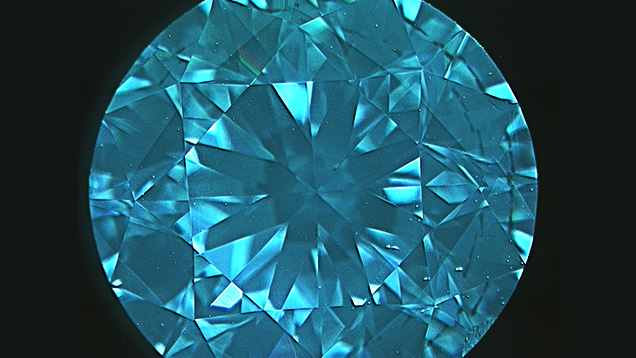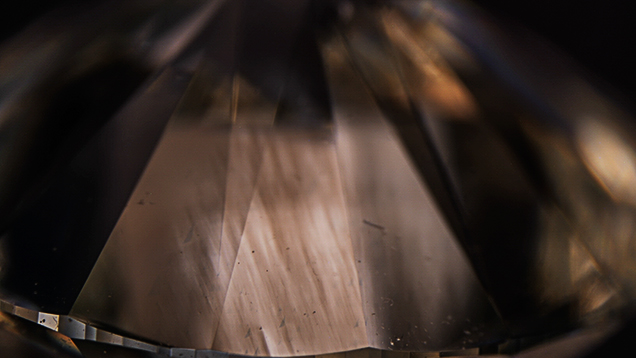HPHT-Grown Synthetic Diamond with Strain

An undisclosed HPHT-grown synthetic diamond was submitted to the GIA laboratory in Ramat Gan, Israel, for a diamond grading report. It weighed 1.60 ct and was in the near-colorless range. Initial screening showed the diamond was type IIa (without detectable nitrogen or boron in the infrared spectrum), which prompted further testing. Examination with the DiamondView fluorescent imaging system revealed the growth patterns betraying the synthetic origin (figure 1). Photoluminescence detected a further lack of impurities: no nickel-related peaks, a very common defect in HPHT synthetics, and only small amounts of nitrogen-vacancy centers.
When viewed under polarized light, the diamond showed very little strain throughout most of the body, but one side on the pavilion displayed noticeable birefringent colors caused by internal strain (figure 2). HPHT-grown synthetic diamonds are known for being mostly free of strain, which generally occurs only around inclusions. They are grown in a metal catalyst, and metal particles can become trapped in them. These trapped particles place stress on the host diamond, which causes strain. But that is a localized strain seen around an inclusion, which was not the case in this synthetic diamond. Except for a small fracture on the pavilion, there were no internal inclusions that could have created strain. Furthermore, the strain patterns were linear rather than radial, as is the case with inclusion-related strain.

Fortunately, this strain is still distinguishable from the type of strain in natural diamonds, which have a cross-hatched pattern known as “tatami” strain. The cause of the strain in this synthetic diamond is unknown, but if it is related to a new growth process we would expect to see more strained HPHT-grown diamonds in the future. As innovations in the synthetic diamond industry continue to introduce a wider variety of products, more and more properties of natural and synthetic diamonds will start to overlap, necessitating caution when separating stones.



